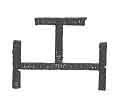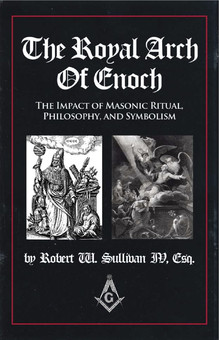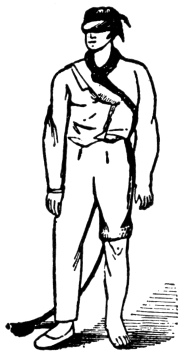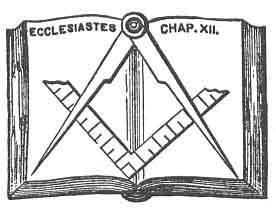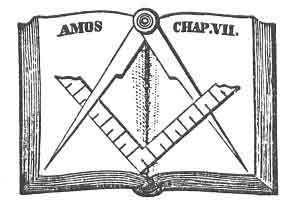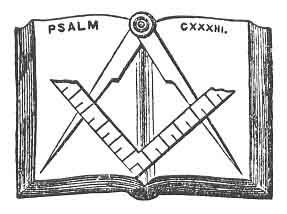Q. What were you then asked?
A. If it was an act of my own free will and accord, if I was worthy and well qualified, duly and truly prepared, if I had made suitable proficiencies in the preceding Degree, and was properly vouched for–all of which being answered in the affirmative,
p. 257
I was asked by what further right or benefit I expected to obtain this important privilege.
Q. Your answer?
A. By the benefit of the pass.
Q. Give the pass?
A. Rabboni.
Q. What does it signify?
A. Good Master, or Most Excellent Master.
Q. What was then said to you?
A. We were directed to wait until the Captain of the Host could be informed of our request, and his answer returned.
Q. What was his answer when returned?
A. Let the candidates enter and be received in due and ancient form.
Q. How were you received in a Chapter of Royal Arch Masons?
A. Under a living arch.
Q. Why under a living arch?
A. To imprint upon my mind in the most solemn manner that the principal secrets of this Degree should be communicated only under a living arch.
Q. How were you then disposed of?
A. We were conducted once around the outer courts of the tabernacle, there caused to kneel at the altar and invoke a blessing from Deity.
Q. After invoking a blessing from Deity, how were you then disposed of?
A. We were again conducted around the outer courts of the tabernacle, where we were met by the Captain of the Host, who demanded of us who comes here, and what were our intentions.
Q. Your answer?
A. As at the door.
Q. Of what did the Captain of the Host inform you?
A. Treat in pursuing our intentions, we should be under the disagreeable necessity of travelling those rough and rugged paths, which all Royal Arch Masons have done before us, but before pursuing further it would be necessary for us to kneel at the altar in due form, and take upon ourselves the solemn oath or obligation of a Royal Arch Mason.
Q. What was that due form?
A. Kneeling upon both knees, both hands covering the Holy Bible, square and compasses, in which due form I took upon myself the solemn oath or obligation of a Royal Arch Mason.
Q. Have you that oath?
p. 258
A. I have.
Q. Will you give it?
A. I will with your assistance.
Q. Proceed. (I, A. B., etc., etc.)
Q. After the oath how were you then disposed of?
A. We were again conducted around the outer courts of the tabernacle, where was exhibited the symbol of the burning bush.
Q. Why was the symbol of the burning bush exhibited to you at this point of your exaltation?
A. To impress upon my mind in the most solemn manner, that the words and signs following were of divine origin, and as such were regarded sacred by the children of Israel–by them transmitted to their posterity, as words and signs by which they should make themselves known and be distinguished by each other for ever after.
Q. How were you then disposed of?
A. We were again conducted around the outer courts of the tabernacle, where a representation of the destruction of the temple took place.
Q. By whom was it destroyed?
A. By Nebuchadnezzar, King of Babylon, who in the eleventh year of Zedekiah, King of Jerusalem, went up, beseiged and took the city, seized on all the holy vessels, together with the two brazen pillars; and the remnant of the people who escaped the sword, he carried away captives to Babylon.
Q. What was the period of their captivity?
A. Seventy (70) years.
Q. By whom were they delivered?
A. By Cyrus, King of Persia, who in the first year of his reign issued his yearly proclamation saying: “Thus says Cyrus, King of Persia,” etc., etc. (See Monitor.)
Q. Who did you then represent?
A. Those of our ancient brethren being released from their captivity.
Q. In that case what answer did you make Cyrus, King of Persia?

Moe is the founder of GnosticWarrior.com. He is a father, husband, author, martial arts black belt, and an expert in Gnosticism, the occult, and esotericism.

